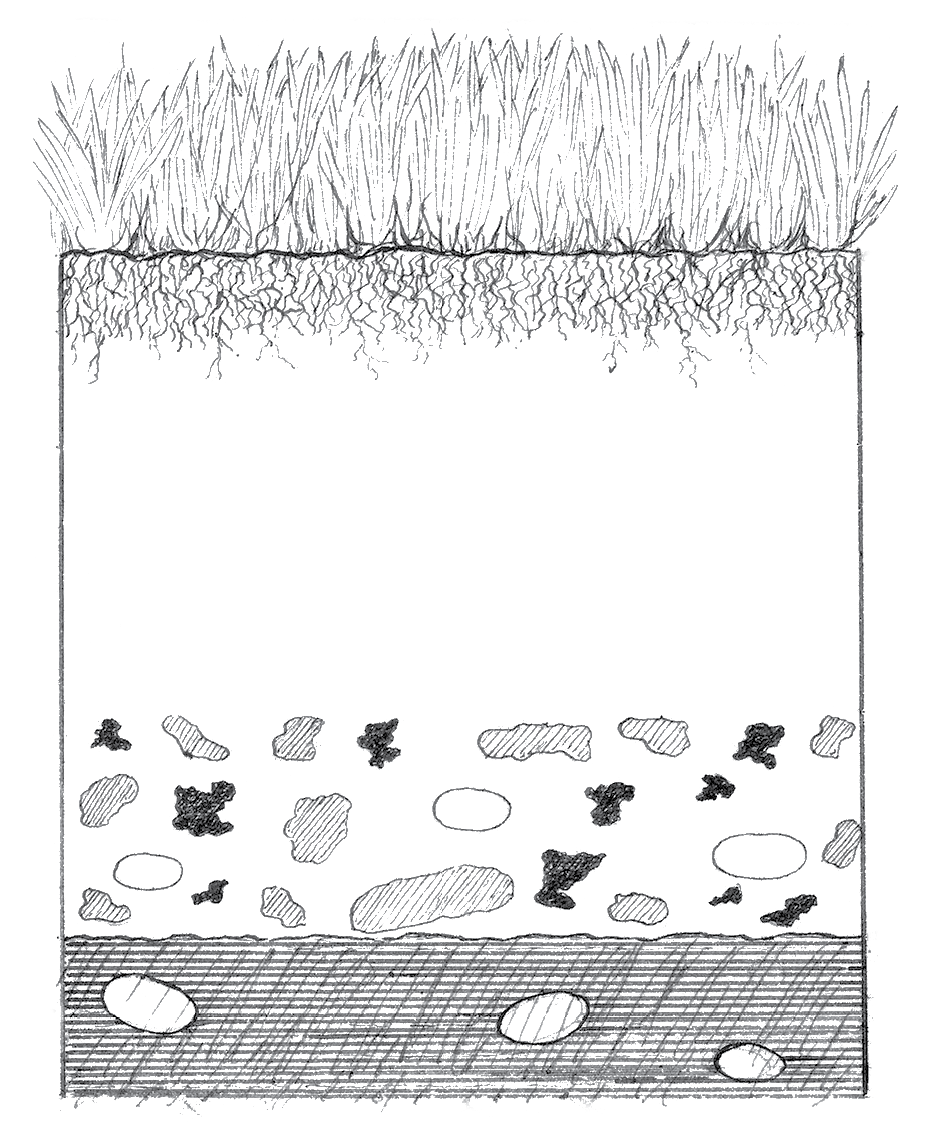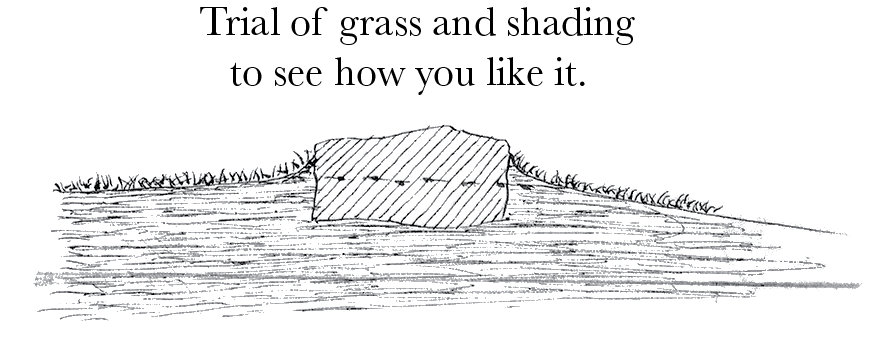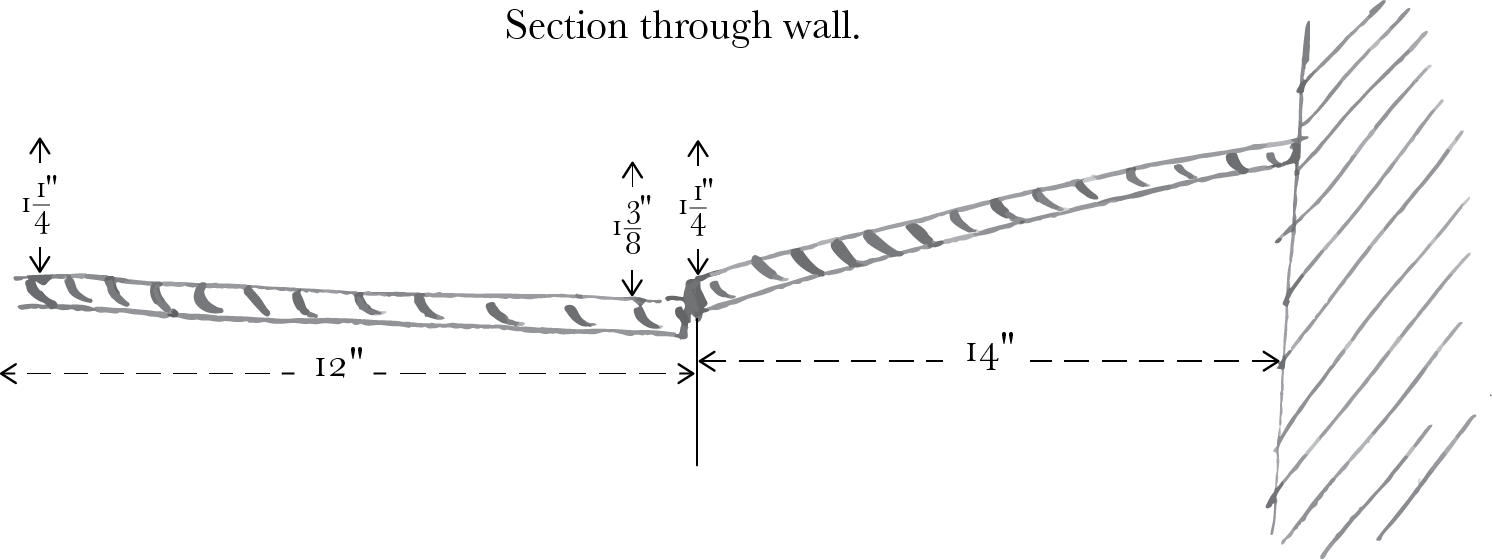From Horace Darwin 7 October 1880
66 Hills Road Cambridge
Oct. 7th. 1880
Dear Father,
I enclose the drawing, and a couple of samples of grass and shading, which perhaps you might like to see.1 I am quite sure there is no mistake in the drawing this time. I could do the shading more carefully if you wished it done. I also send the Gravetye notes, but I dont think they will be much good.2 If you want me to ask Mr. Easton anything, I shall be in London early next week & could do so.3 He was away when I took the notes. This morning I went to the place I told you about where I had seen the worm castings. It is a little back street called Saint Tibbs Row.4 On one side there is a wall which comes down to the pavement, leaving a crack between the flags and the bricks of the wall from in. to 1 in. wide It is on the earth in this crack where I found the castings. There are some trees on the other side of the wall, but I saw no leaves about, but there were plenty of bits of straw, & grass lying near the castings. Also several small grasses were growing near the castings and on the wall there was moss. I suppose from this that this is of no use to you, shall I observe anything more about it.
We are getting a little more settled here, but things are very much upside down still, & there is plenty to do.5 George is back but I have not seen him yet, when I do I hope to hear a better account of Mother.6
Your affec son | Horace Darwin
[Enclosure 1]

[Enclosure 2]


[Enclosure 3]
Sep 10th. 1878
Gravetye Manor.
I was told that the S.W. corner of the house had settled, & I went into the cellar to see if I could see any worms at work. I found a good many at work between the stones they were small castings. The floor was damp. & I believe water lodges sometimes or rather used to lodge there, there are drains made in the floor. I only found castings near the S.W. corner, the floor having been repaved over a good piece of the cellar. There was a root between the stones in one place. In some other parts of the pavement it was possible to force anything down between the stones for a few inches, there being nothing between them or only very loose earth. The ground had been opened at the S.W. corner outside the house to a depth of about 4 feet to see if anything could be found out about the sinking but with what result I do not know.

This section7 shows the start of a paving stone next to the wall, which I thought at first might be due to the worms, but I think it most likely it is not so, because the floor has gutters in it, & there is one running parallel to this wall about 14″ from it, and a little beyond the point where the section is taken, hence this stone might have been placed in the position in which I found it, so as to form the beginning of the gutter.
CD annotations
CD note:
Enclosure 1 verso:
Description
Section in field at Maer Hall
Reduced to natural scale
A. Turf inch
B. fine vegetable mould 2 inches
C. Mould with fragments (describe) 21
D. Substratum of black peaty soil with grey pebbles
Footnotes
Bibliography
Darwin, Francis. 1916. Memoir of Sir George Darwin. In Scientific papers, by George Howard Darwin. Vol. 5. Cambridge: Cambridge University Press.
Earthworms: The formation of vegetable mould through the action of worms: with observations on their habits. By Charles Darwin. London: John Murray. 1881.
Summary
Worm-castings. Encloses notes about worm activities at Gravetye Manor.
Letter details
- Letter no.
- DCP-LETT-12742
- From
- Horace Darwin
- To
- Charles Robert Darwin
- Sent from
- Cambridge
- Source of text
- DAR 65: 99, 100; DAR 162: 72, 73
- Physical description
- ALS 2pp †, encl 2pp
Please cite as
Darwin Correspondence Project, “Letter no. 12742,” accessed on


